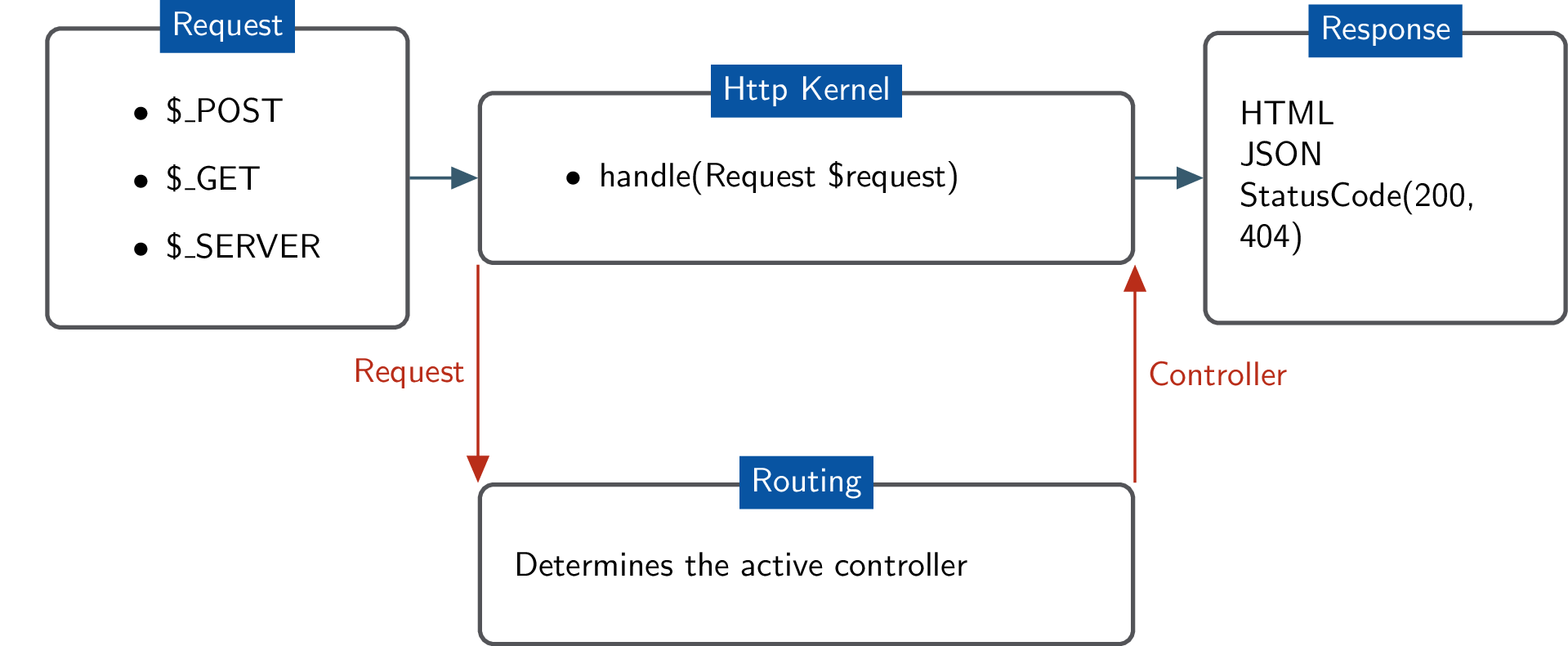Routing system overview
This documentation needs review. See "Help improve this page" in the sidebar.
Drupal's routing system is heavily based on Symfony's. Drupal's routing system can do everything Symfony's can (and more), and both use the same syntax to define routes.
To learn the basics of Drupal's routing system, the Symfony Routing component's documentation is an excellent place to start. The documentation here does not go into every aspect of Symfony's routing system, so if you're stuck on something it's a good idea to check the Symfony documentation as well.
Specific version(s)
The Drupal 8 routing system replaces the Drupal 7 hook_menu(). For more information see the comparison of Menu API in Drupal 7 and 8.
Overview
A route is a path which is defined for Drupal to return some sort of content on. For example, the default front page, '/node' is a route. When Drupal receives a request, it tries to match the requested path to a route it knows about. If the route is found, then the route's definition is used to return content. Otherwise, Drupal returns a 404.
Routes and controllers
Drupal's routing system works with the Symfony HTTP Kernel. However, you don't need to know very much about the Symfony HTTP Kernel to do basic route operations. This is how the components relate to each other:

The routing system is responsible for matching paths to controllers, and you define those relations in routes. You can pass on additional information to your controllers in the route. Access checking is integrated as well.
Checking available routes
By using the Devel module you can go to /devel/routes to get a full list of registered routes for the site. This is handy if you for example want to have a link to a Drupal admin page within a module.
Parameters in routes
Drupal's routes may include placeholder elements which designate places where the URL contains dynamic values. In the controller method, this value is available when a variable with the same name is used in the controller method. For example in example.routing.yml:
example.name:
path: '/example/{name}'
defaults:
_controller: '\Drupal\example\Controller\ExampleController::content'
requirements:
_permission: 'access content'The {name} element in the URL is called a slug and is available as $name in the controller method. More on parameters in routes
Controller Example:
Let's see how we can use the slug variable in the controller
namespace Drupal\example\Controller;
use Drupal\Core\Controller\ControllerBase;
/**
* Returns responses for Example Controller routes.
*/
class ExampleController extends ControllerBase {
/**
* Builds the response.
*/
public function content($name) {
$build['content'] = [
'#type' => 'item',
'#markup' => $this->t('Hello @name', ['@name' => $name]),
];
return $build;
}
}
See also
Help improve this page
You can:
- Log in, click Edit, and edit this page
- Log in, click Discuss, update the Page status value, and suggest an improvement
- Log in and create a Documentation issue with your suggestion
 Support for Drupal 7 is ending on 5 January 2025—it’s time to migrate to Drupal 10! Learn about the many benefits of Drupal 10 and find migration tools in our resource center.
Support for Drupal 7 is ending on 5 January 2025—it’s time to migrate to Drupal 10! Learn about the many benefits of Drupal 10 and find migration tools in our resource center.









